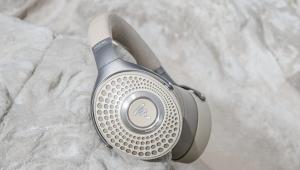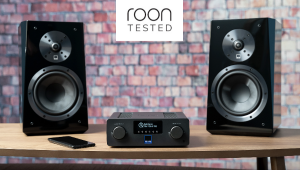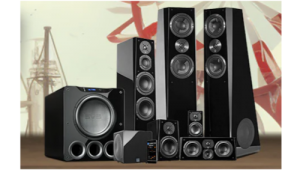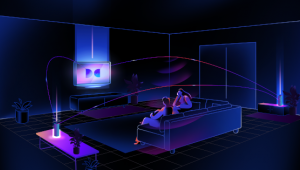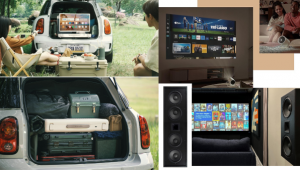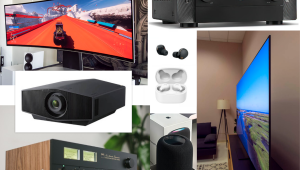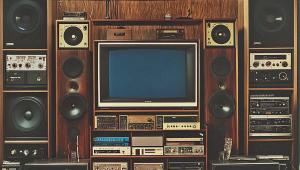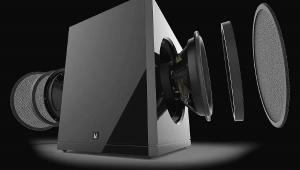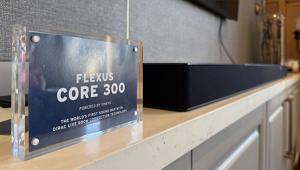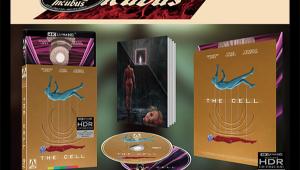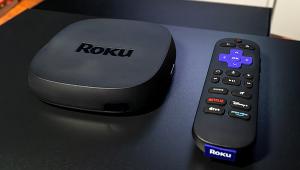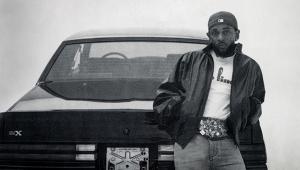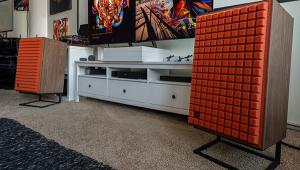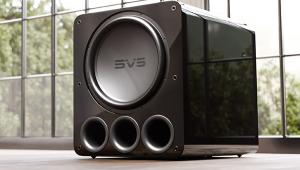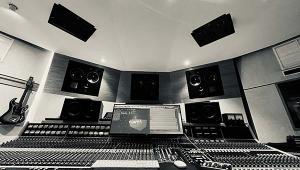Best Gear of Late 2021 and 2022 Page 3

Canton Chrono 70 Loudspeaker: $1,995/pair
Just over a year ago, the 50-year-old German brand Canton made its way back to the States after a decade-long hiatus. Among the first wave of products to arrive on these shores is the impressive looking — and sounding — Chrono 70 floorstander, the smallest of three towers in the Chrono series and one of the few speakers made in Europe, not China. The speaker is a rear-ported two-and-a-half-way design that mates an aluminum-manganese tweeter with two 6-inch aluminum woofers in a stately 37-inch-tall cabinet offered in black or white.Running through his arsenal of demo tracks, reviewer Michael Trei confirmed the Chrono 70’s ability to produce deep, tuneful bass while shrugging off massive orchestral crescendos. On the Philip Glass score for Mishima, the 70’s conveyed a spacious soundstage while preserving the tonal clarity and fine detail of the track’s percussive elements. And when it was time to crank it up and get the party started, Trei loved how effortlessly and cleanly the speakers handled “Tied Up” by Yello while maintaining a neutral tonal balance. Whether you’re looking for a set of floorstanding speakers for music or want to build a surround-sound system around them, the Canton Chrono 70 is a speaker that, as Trei put it, punches way above its weight class.
AT A GLANCE
Plus
Impressive bass output
Plays loudly without stress
Matching center, surround, and Atmos speakers available
Minus
No wood finish option
Needs to be pulled out into the room for best sound
Full Review Here (posted 2/2/22)

Q Acoustics Q Active 200 Loudspeaker Review: $1,999
The décor-friendly Q Active 200 wireless speaker system from England’s Q Acoustics is latest entrant in the bustling "just add music" category. But it is far from ordinary — and I’m not talking about its distinctive, space-age looks. In addition to receiving 24-bit/96kHz resolution music wirelessly over a 5GHz link from the supplied hub, each speaker uses a pair of unconventional full-range drivers to produce sound reviewer Daniel Kumin described as “impressively neutral and accurate.” An evolution of the “distributed model drivers” NXT introduced almost two decades ago, Q Acoustics’ Balanced Mode Radiator (BMR) drivers use a conventional voice coil to produce sound but vibrate like a ribbon (or planar-magnetic) driver instead of moving in and out like a traditional speaker cone.The dual 2.25-inch BMR drivers excel at creating a spatial stereo effect and are supported by a conventional (and unseen) 4.5-inch cone woofer that fires through a port in the back of the speaker. The woofer kicks in at the unusually low crossover frequency of 150Hz to keep it focused on reproducing deep bass, and each speaker has its own built-in 100-watt power amplifier. Besides delivering hi-res signals to each speaker, the hub is Roon Ready and supports wireless streaming via AirPlay 2, Chromecast, and Spotify in addition to handling UPnP streaming over Wi-Fi or wired Ethernet and providing optical digital, HDMI, and analog stereo inputs. The sonic payoff is a deep, spacious, and diffuse soundstage with a stereo effect that remains strong well off-axis. “I could sit 30 degrees off-center and still hear generous spread to the ‘off-side’ speaker,” Kumin wrote. “It was not full-width stereo, of course, but most conventional direct-radiators collapse almost entirely into the near-side speaker under the same conditions.”
AT A GLANCE
Plus
Accurate response and tonal balance
Spacious imaging with impressive off-axis performance
Unique looks and fine finish
Minus
Peak level may fall short for very large rooms
Ergonomics of physical controls and indicators
Full Review Here (posted 12/22/21)

KLH Model Five Loudspeaker: $2,000/pair
The new Model Five remains true to the original’s three-way acoustic-suspension design, which uses the air inside a sealed cabinet to produce powerful bass from a relatively small enclosure. Developed and patented by AR founder Edgar Villchur, the design was a groundbreaking concept back in the day. The updated Model Five has a distinct ’60s vibe with an elegant wood-veneer finish (mahogany or walnut) but there are a few technical differences, including the use of a modern 1-inch aluminum-dome tweeter and a single 4-inch pulp-paper midrange driver instead of the two side-by-side 5-inch drivers in the original. Otherwise, the speaker has a 10-inch pulp-paper woofer similar to the one used in its predecessor and the same rear-panel Low/Mid/Hi switch for increasing or decreasing mid/high-frequency output. Oh, and it sounds great — maybe even better than the Model Fives, circa 1968.
Reviewer Tom Norton, a diehard audiophile known to tell it like it is, spent many hours listening to the KLH Model Fives and was pleased by what he heard. Captivated by the “huge sonic bubble” the Fives conveyed on Dead Can Dance In Concert, he noted how the speakers excelled with female vocals, which came across as “warm, smooth, and uncolored.” The speakers held their own with bass, too: “Recordings of Japanese Taiko drums sounded hard-hitting, without mud or boom…and when I popped in a good recording of Bach's Toccata and Fugue in D-minor the bass I heard would engage all but the most rabid organ fanatics.” Somewhere Henry is smiling. Be sure to read the full review, which traces the history of speaker design in the 1960s.
AT A GLANCE
Plus
Clean, uncolored sound with solid bass
Cool vintage looks
Three-way switch to modify mid- and high-frequency output
Minus
Best sound with grilles off
Full Review Here (posted 10/20/21)
Subwoofers
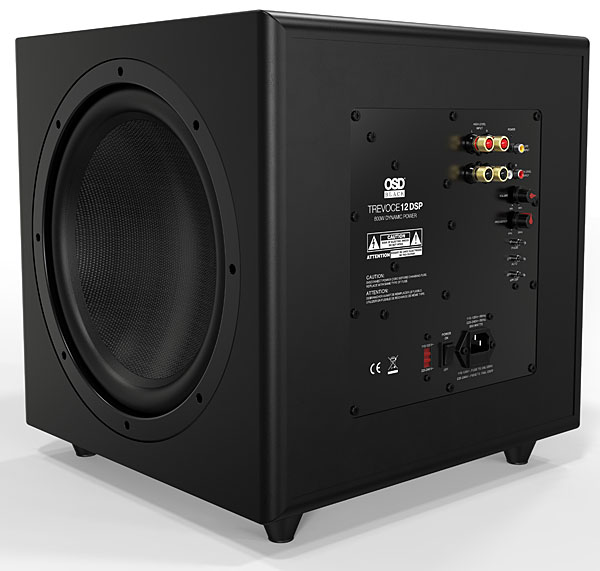
OSD Black Trevoce 12 EQ DSP Subwoofer: $600
If you don’t know much about OSD Audio (OSD is short for Optimal Speaker Design), it might be time to start paying attention. We were caught off guard by the clean, deep bass emanating from the $200 Nero TubeBass 10 subwoofer we reviewed last year. This time, we stepped up to the current $600 flagship in OSD’s Black series and were not disappointed. (OSD is planning to launch a $799 model with a 15-inch driver in the near future.) The Trevoce 12 EQ DSP has a lot to offer for 600 bucks: It mates a 12-inch woofer with two side-facing passive radiators, app controllable DSP with 25-band parametric equalization, and an 800-watt amplifier in a manageable 15-inch cube. There are also standard crossover, volume, and phase controls but you probably won’t use them once you fire up the app.Reviewer Al Griffin subjected the subwoofer to dual torture tests — one in a system set up for music, the other in a home theater dedicated to movie watching. The Trevoce 12 rendered the bass swells on Steven Wilson's "King Ghost" (The Future Bites) in a clean, dynamic manner and was able to convey the immense power of the deep synth-bass lines on "Valley" from The Orb's 1995 electronic album Orbus Terrarum. “I was impressed with how much of it I was hearing,” Griffin noted, adding: “I was also able to push the volume to near-uncomfortable levels without losing clarity.”
Movie time was every bit as impressive. When the plane gets hijacked and smashes into a hangar in the 2020 sci-fi action thriller Tenet, the impact was palpable, and Ludwig Göransson's droning, bass-heavy score was rendered in an appropriately dynamic manner — one that created the extreme tension the composer was no doubt going for. If you like the idea of nuanced performance from a subwoofer with an arsenal of controls that lets you really dial in the bass, the Trevoce 12 EQ DSP is well worth a look and listen.
AT A GLANCE
Plus
Deep bass from a compact design
DSP and app control
Minus
Control app not user-friendly
Unreliable auto on/off function
No wireless connection option
Full Review Here (posted 1/26/22)
- Log in or register to post comments







